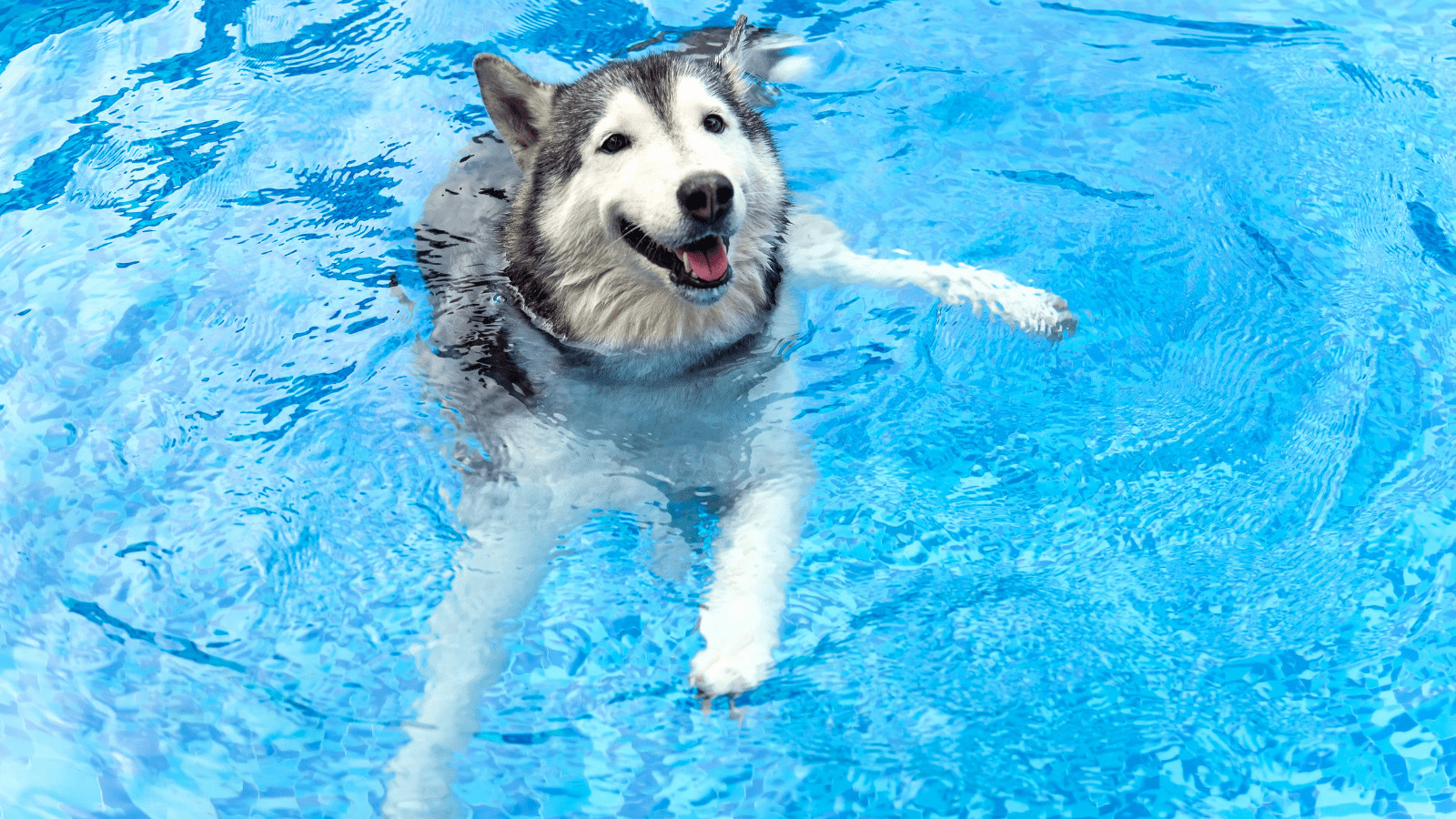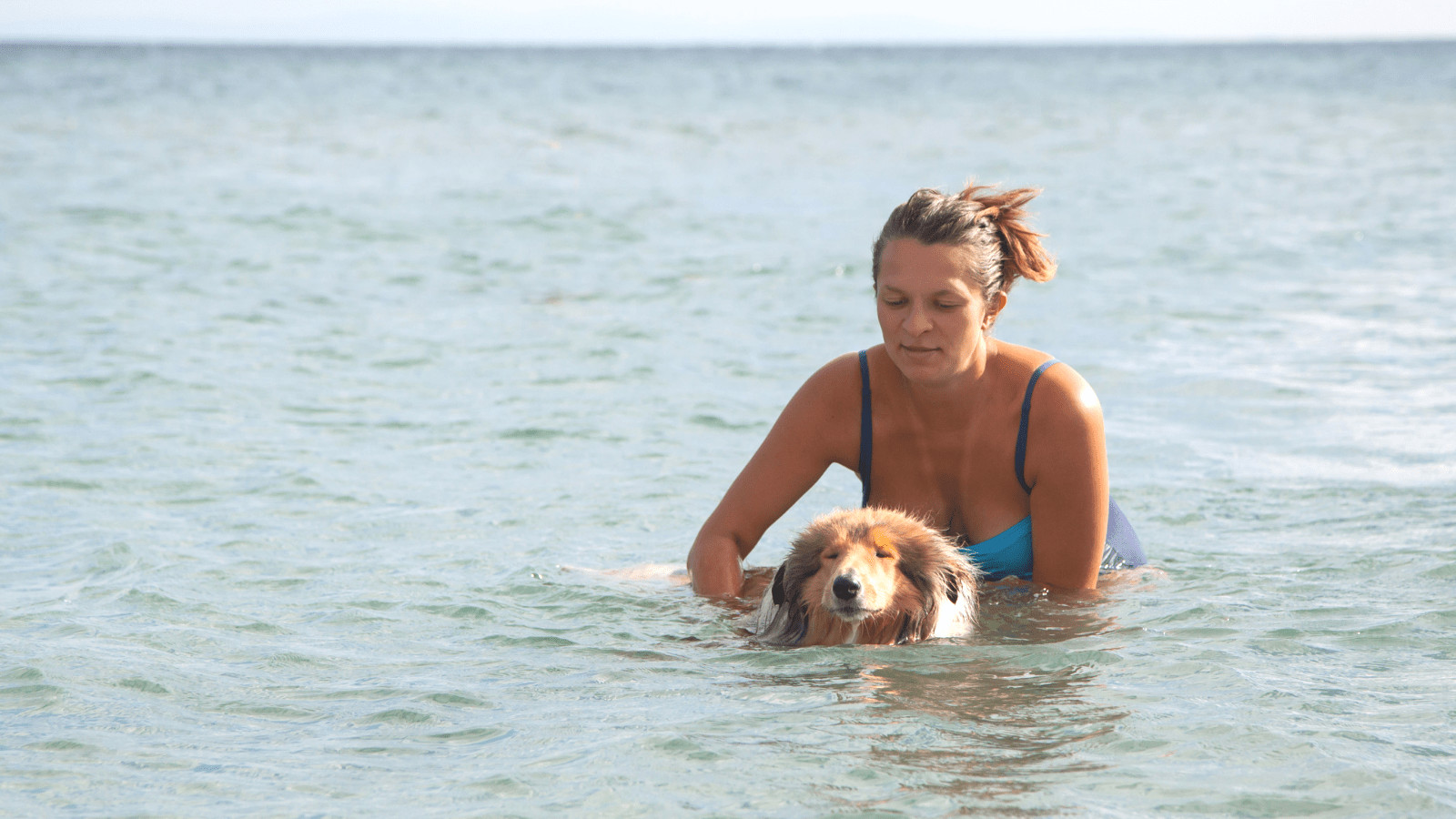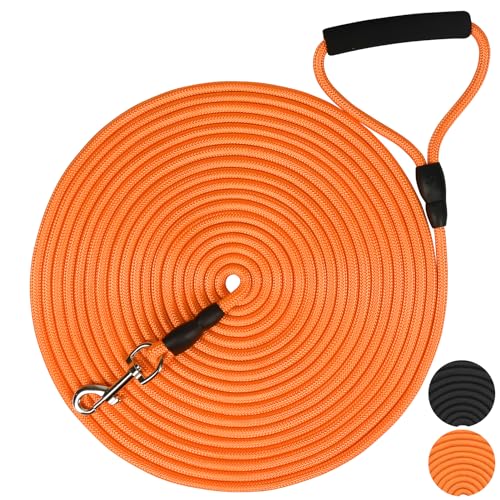Did you know that a dog’s breed will determine if a dog will be afraid of swimming or is a natural swimmer? Therefore, if you’ve decided to introduce your pet to swimming, it’s best to know your dog’s natural instincts towards the water, as it’ll help you know how best to approach training your dog.
In this article, I’ll be giving you tips on how to train a dog to swim. But first of all, when should you teach your pet to swim?

Table of Contents
At What Age Should You Teach A Puppy To Swim?
A puppy is old enough to be taught how to swim when it is up to 10 weeks old. For dog breeds that are not natural swimmers, you may want to wait for an additional 4 to 5 extra weeks.
This post contains affiliate links. However all the information provided on this site are my own honest opinions. See more in Disclaimer.
Teaching a dog to swim as a puppy is easier than when the puppy grows into an adult. Adult dogs who are not natural swimmers and are not used to swimming can be impossible to train.
1. Locate A Safe Training Area To Give Lessons
The first thing you need to do is find a safe area for you to train and practice swimming in. Also important, the spot should be shallow water, somewhere you trust to be safe. Here are some possible places you could use to train.
Train A Dog To Swim In A Pool
It’s recommended that you use a pool to teach your dog how to swim. A pool has a large amount of space and has you can stay at the shallow end, have enough room to train and play in.
Train Your Dog To Swim In A Lake Or River
If you do not have access to a pool and what you have is a river, lake or a pond, you can also use it. However, it shouldn’t be a deep one and not one whose waters run fast. All of these are to prevent your dog (and yourself) from drowning.
Also, the river/pond shouldn’t contain many plants that could get in your pets’ way or could be a source of danger.
Teach A Dog To Swim In A Bathtub
If you do not have access to a pool, pond, lake, or river, you can also use a bathtub to conduct the swimming lessons.
It is best if you have a big sized bathtub as the bigger it is the more space you will have to practice. However, you can still use a regular-sized tub and train well if your dog is of a small breed adult dog or a puppy of any breed. You will also need to wear your swim trunk or bathing suit as you will need to get into the tub at the same time as dogs learn the swimming movement from their owner. Don’t expect to do this without getting wet yourself.
Finally, the person teaching the dog to swim should limit the audience monitoring the training to no more than a few people, so your pet doesn’t get scared.
2. Introduce Your Dog To The Water
To introduce your pet to the water, you’ll need some of his favorite toys; a ball is perfect. Throw the ball inside the water and ask him to fetch it.
Upon completion of this task, there should be treats in hand to reward him. This simple task should be repeated several times a day for days until your pet has gotten familiar with the water. Treats can be quite useful in getting a scared dog to swim.
If your breed is one that’s a natural swimmer, then you can get into the pool and ask your pet to join you.
Some dog breeds that hate water include Doberman, Pug, Dachshund, Shih Tzu, Basset Hound, Greyhound. etc. These breeds will be quite difficult to train to swim, so be prepared.
On the other hand, some dog breeds that are natural swimmers include barbet, American water spaniel, Irish water spaniel, English settler, flat-coated retriever, Labrador retriever, etc.
3. Ensure Your Dog Is Safe During Dog Training
Putting your dog on a leash while swimming is a necessity to help keep your pet safe. You’ll need this even more if your dog breed is not a natural swimmer, and it’s easy for him to drift far if not leashed.
You won’t be using your regular dog walking leashes. There are specific dog swim leashes, these leashes are floatable, and the fibers are not damaged by constant water exposure. They will help to keep your dog close and safe. Here are two of the best dog swimming leashes to get if you don’t have one already.
Furthermore, these dog swim leashes feature a stainless steel hook snap, which is resistant to rust. When picking a dog swimming leash, 3.5 inches to 4 inches is an ideal length to consider.
For older dogs, you might need to get them a life jacket or floatation device to help them float easily. It will also help as dog training will take longer, so you need to keep them safe while you train. Here are two great lifejackets to consider.
4. Teach Your Dog To Swim
This training time is where the actual work begins. There are different techniques for teaching a dog how to swim. However, this is the easiest.

Trending in Dogs:
Carry your dog while in the water; hold him with one hand while placing the other under his belly. Gently place him in the water keeping only his head and back above the water.
Hold him in place and move like you’re swimming yourself. Your dog should start stroking on his own. It’ll be easier for a natural swimming breed dog to catch up with this lesson than the others.
Watch the video below on more techniques you can use to teach a puppy to swim.
5. Repeat And Give Your Dog Time To Learn
You cannot succeed on how to train a dog to swim if you do not have patience. It’ll take some time for your pet to get good at swimming; days, weeks, and maybe months. You need to take things gradually.
What’s important is that you repeat the training. If you’re very serious about your dog learning to swim, then you should include a training time in your dog’s daily schedule. It is best to budget for about twenty minutes each day.
Having a treat or food to reward your pet after every session is also necessary as it will encourage him. If you don’t have the time to follow up on the training, you can ask someone else at home which your dog is comfortable with to help with it.
Conclusion
Your dog knowing how to swim is an advantage as the knowledge will help your dog to save himself if he’s in danger of drowning.
Also, once your dog learns how to swim it will allow you to have a lot of fun together in the pool or the beach.

So be patient with your dog as it will be worth it in the end. The steps discussed above on how to train a dog to swim will make the training task even easier.
I hope you liked this article on how to teach a dog to swim. Don’t forget to share these dog swimming tips with your friends.












